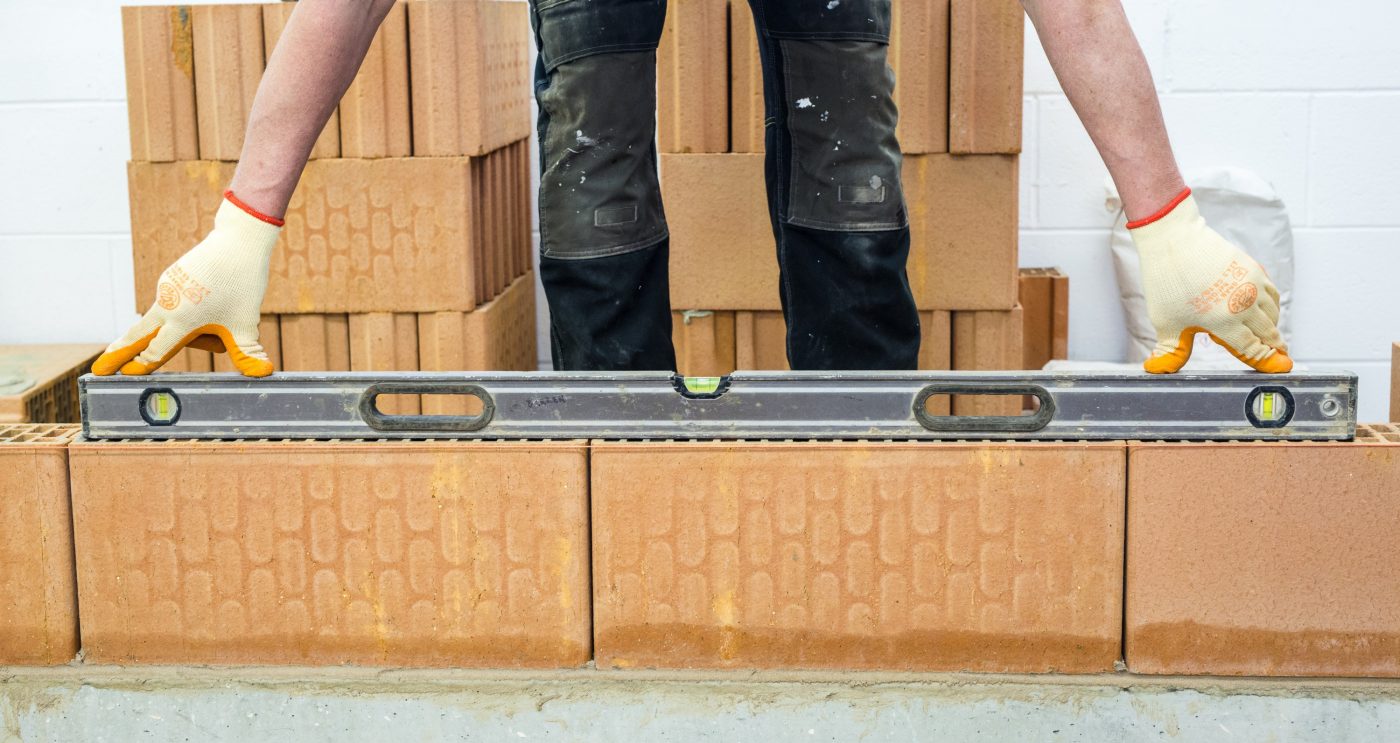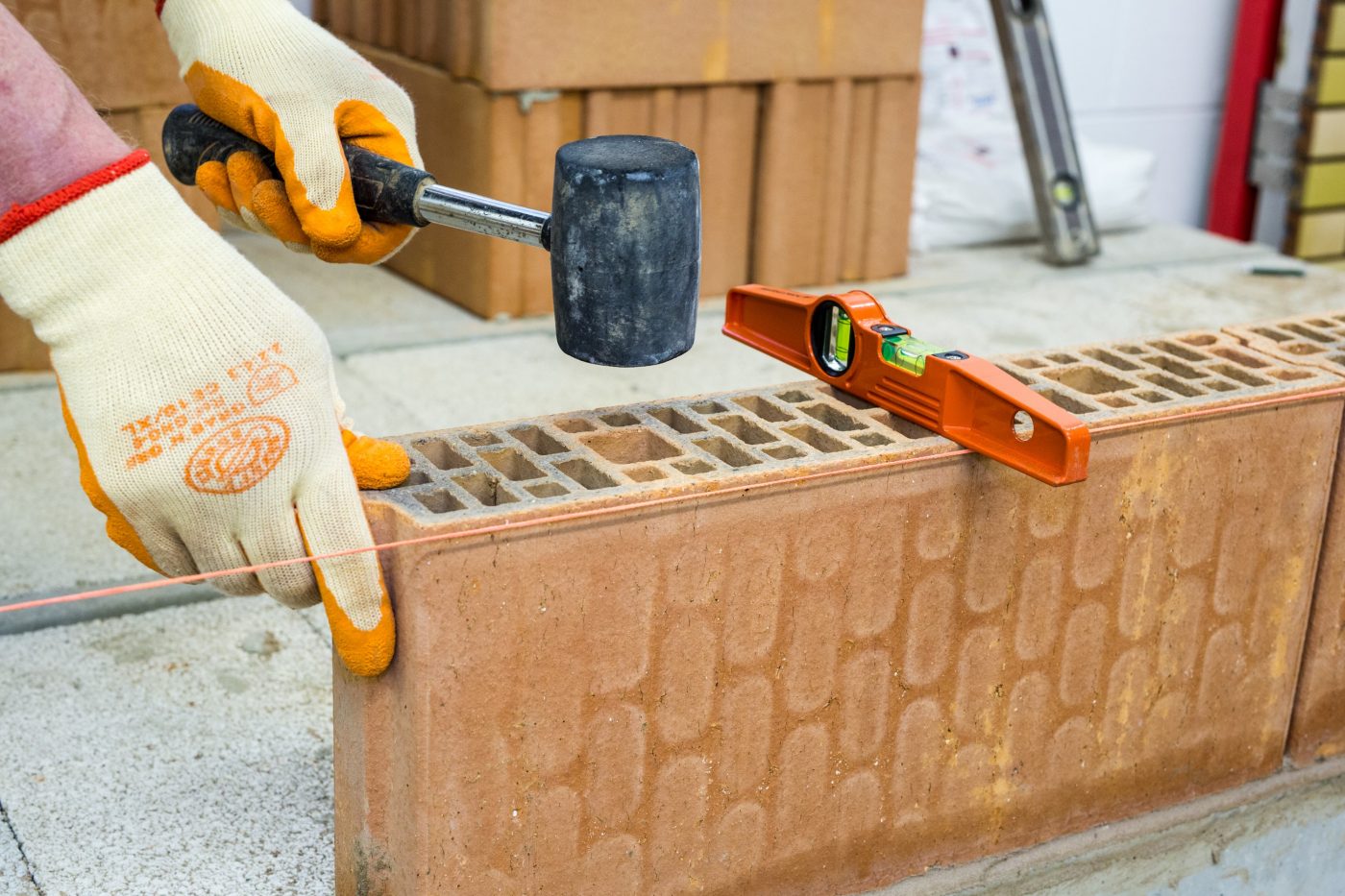See how easy it is to use Porotherm in your construction projects in this step-by-step guide and build up to 30% faster.



See how easy it is to use Porotherm in your construction projects in this step-by-step guide and build up to 30% faster.
The first course is laid on a traditional sand-cement mortar bed. It is crucial to ensure that the first blocks are level, horizontal in both directions and vertically plumb. This is a key stage of the process as it determines the levelness of each of the subsequent build storeys, as well as the speed and accuracy of the construction as a whole.
Video transcript
The preparation of the base course is the most critical stage of building with the Porotherm system.
Before commencing all coursing requirements should be considered. Coursing blocks cut from Porotherm should be used in the base course. Where concrete floors are incorporated standard bricks can be used with traditional mortar to overcome any excessive variation in levels, these should be between the floor and the Porotherm blocks.
Block layers must ensure the base course is level horizontally along and across each block and there are no steps between each block. Once the block layers have the base course level, the highly engineered blocks combined with a good standard of workmanship, will ensure the walls will be vertically plumb and of consistent high quality.
Guidelines for mixing ZeroPlus mortar. In comparison to traditional blockwork, Porotherm requires around 95% less water.
Disclaimer: The mortar is now supplied in 12.5 kg bags. The mix ratio for standard rollers (UK core range blocks) is 3.1 litres water per 12.5kg bag. It is 2.8 litres of water per 12.5kg bag for the monolithic range roller.
Video transcript
ZeroPlus mortar has been developed specifically for the Porotherm system. A single 15 kilogram bag mixed with just 3.6 liters of water will lay one full pack of blocks when applied by roller.
The mortar can be mixed in small quantities local to laying, which means a reduction in forklift movements, less plant or pedestrian contact and no need for noisy cement mixers. Unlike traditional mortar zero plus can be used from zero degrees centigrade meaning projects can gain extra working time during winter.
It is best practice and good workmanship to brush each course before applying the mortar.
Disclaimer: The Porotherm blocks are now sold in 500mm lengths instead of 300mm lengths.
Video transcript
It's recommended that the block layer brushes down the top of each course before applying the ZeroPlus mortar. This removes any dirt or grit from the block work, to ensure a smooth level surface to place the next layer of blocks on.
The Porotherm roller plays a key part in allowing fast and easy application of mortar.
Video transcript
A special roller has been designed for use with Porotherm. The roller is fast and easy to use, it provides an even spread of mortar along the block work and reduces wastage and dermatological risk.
Pour the required amount of ZeroPlus mortar into the roller and roll it backwards along the wall.
The first course is laid on a traditional sand-cement mortar bed. It is crucial to ensure that the first blocks are level, horizontal in both directions and vertically plumb. This is a key stage of the process as it determines the levelness of each of the subsequent build storeys, as well as the speed and accuracy of the construction as a whole.
The specific size of the block will affect the bonding pattern. The UK core range of 100mm, 140mm & 190mm only require a minimum of 100mm bond. Monolithic blocks greater than 190mm thickness should be laid using a half bond with a minimum of 100mm bond at detailing.
Video transcript
Once the base course has been prepared, laying Porotherm is a simple process. Porotherm block walls require a minimum bond of a hundred millimetres or a 1/3 bond, this minimizes the number of cuts required.
Once the layer of blockwork has been brushed down and the mortar has been applied, lay the blocks next to each other using the interlocking design. The block should be positioned and struck with a mallet to ensure the block is seated correctly.
The accuracy of the Porotherm blocks combined with the correct standards of workmanship, ensures the walls of vertically level. Where string lines are used, they’re line only, the level is maintained due to the accuracy of material and good workmanship.
Cutting Porotherm can be achieved with both hands and electrical tools. Dust suppression can be easily achieved by plunging the block into a bucket of water prior to cutting it.
Please ensure you adhere to site Health and Safety rules and regulations when cutting any material.
Video transcript
Mechanical cutting is recommended when cutting Porotherm blocks.
Block layers can utilise water suppress disc cutters, electrical reciprocating saws with the appropriate blades, or bench cutting sores.
Block layers may choose to cut by hand, appropriate care should be taken to maintain a clean cut and a consistent cut joint width of ideally 10 millimetres to a maximum of 15 millimetres. However, hand cutting can produce more waste.
Ancon® has developed an innovative range of wall ties for use with Porotherm cellular clay blockwork, where the horizontal bed joints are just 1mm. The range includes ties for internal wall junctions and internal/external cavity walls. They are manufactured from corrosion-resistant stainless steel and are suitable for use in housing and commercial applications.
Video transcript
Special two-part wall ties have been developed for use with the Porotherm system. Installation is phased, which eliminates any danger or injury from wall ties projecting from a part built cavity wall. The first part is applied to the Porotherm wall during the build process, the second part is attached as the outer skin of the wall is built up.
A wide variety of fixtures and accessories are available for use with Porotherm.
Video transcript
A wide range of fixings are available for use with the Porotherm system. Many are off the shelf and some have been specifically designed for use with Porotherm. These fixings could with a complete range of light to heavy requirements.
wienerberger Poroparge and Eco-parge should be applied to the internal room facing of blockwork using a soft-headed broom. Care should be taken to ensure all vertical joints are fully filled, this will provide excellent air-tightness.
Video transcript
Eco-parge is a high-performance modern parge coat that has been specifically designed as part of the Porotherm system. It helps to achieve excellent air tightness, optimising the sound and thermal performance of the system prior to dry lining.
Mix with clean water using a paddle, mix at a rate of approximately 10 liters per 25 kilogram bag. Mix for five minutes, allow standing for five minutes, then remix.
Eco-parge should be applied by brush to the internal room facing blockwork, both block faces and joints to a thickness of two to three millimeters. Use a soft headed broom, load the brush and work it into the joints ensuring they're filled. Once filled stroke the material out in a horizontal manner covering the face of the blocks, this will flatten the surface out. A single bag of Eco-parge will cover approximately 20 square meters, for the thickness of two to three millimeters.
Disclaimer: Only wienerberger parge systems should be used, these include wienerberger Poroparge and wienerberger Eco-parge.
Find products, guidance and information on how to get the most from your clay block projects.

Browse Porotherm products , order a sample, or contact us to find out more.